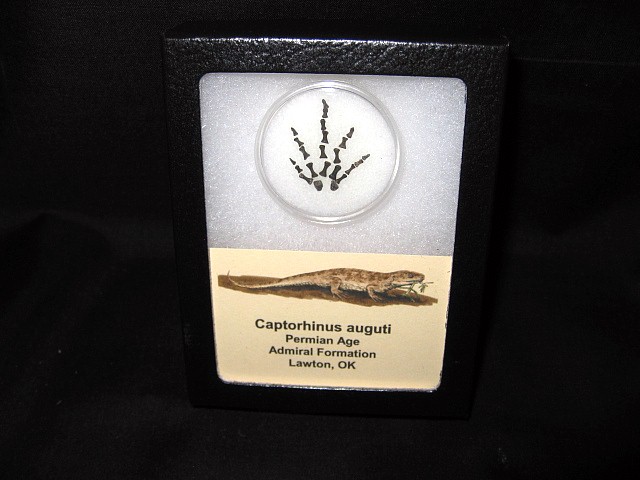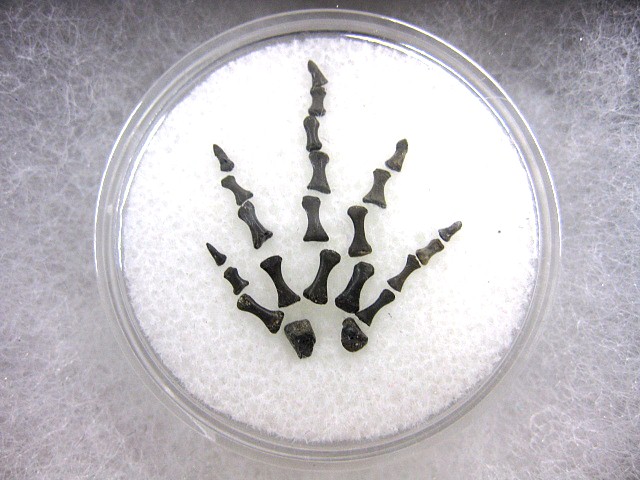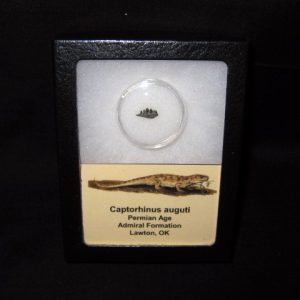Description
- Captorhinus auguti
- Permian Age
- Admiral Formation
- Lawton, Oklahoma
- The Foot measures approx. 15/16″ long
- The Foot is in a 1.5″ Gem Jar and is displayed inside the 3″ x 4″ Riker Mount with Label as shown
Captorhinus is an extinct genus of captorhinid reptiles that lived during the Permian period. Its remains are known from North America, Europe, India and Africa. In 1882, Edward Cope described a fragmentary skull from the Lower Permian of Texas collected by W. F. Cummins at Coffee Creek as Ectocynodon aguti. The name had then been revised several times by different paleontologists as more genera were discovered. In 1911, paleontologist Ermine Cowles Case revised the recently discovered species. While there are several forms of Captorhinus, there are three main species that are the best known. The previously mentioned Captorhinus aguti is the type species of Captorhinus, but there is also a fair amount of material collected on Captorhinus magnus and Captorhinus laticeps. The most distinguishable trait of captorhinus is its namesake: the hooking of the snout from prominent ventral angulation of the premaxillary process. Other notable characteristics include the dorsally positioned alary process of the jugal on the medial surface and flushed with the orbital margin, the retroarticular process longer anteroposteriorly than broad, and the anteriormost dentary tooth strongly procumbent. The posterior teeth are either chisel-shaped or ogival.






